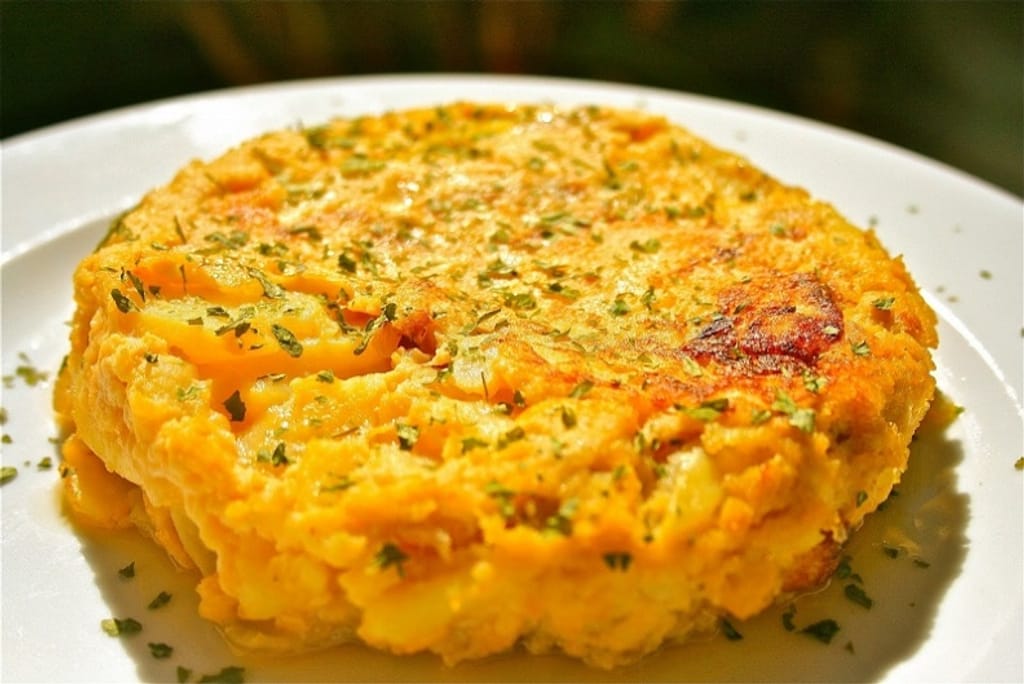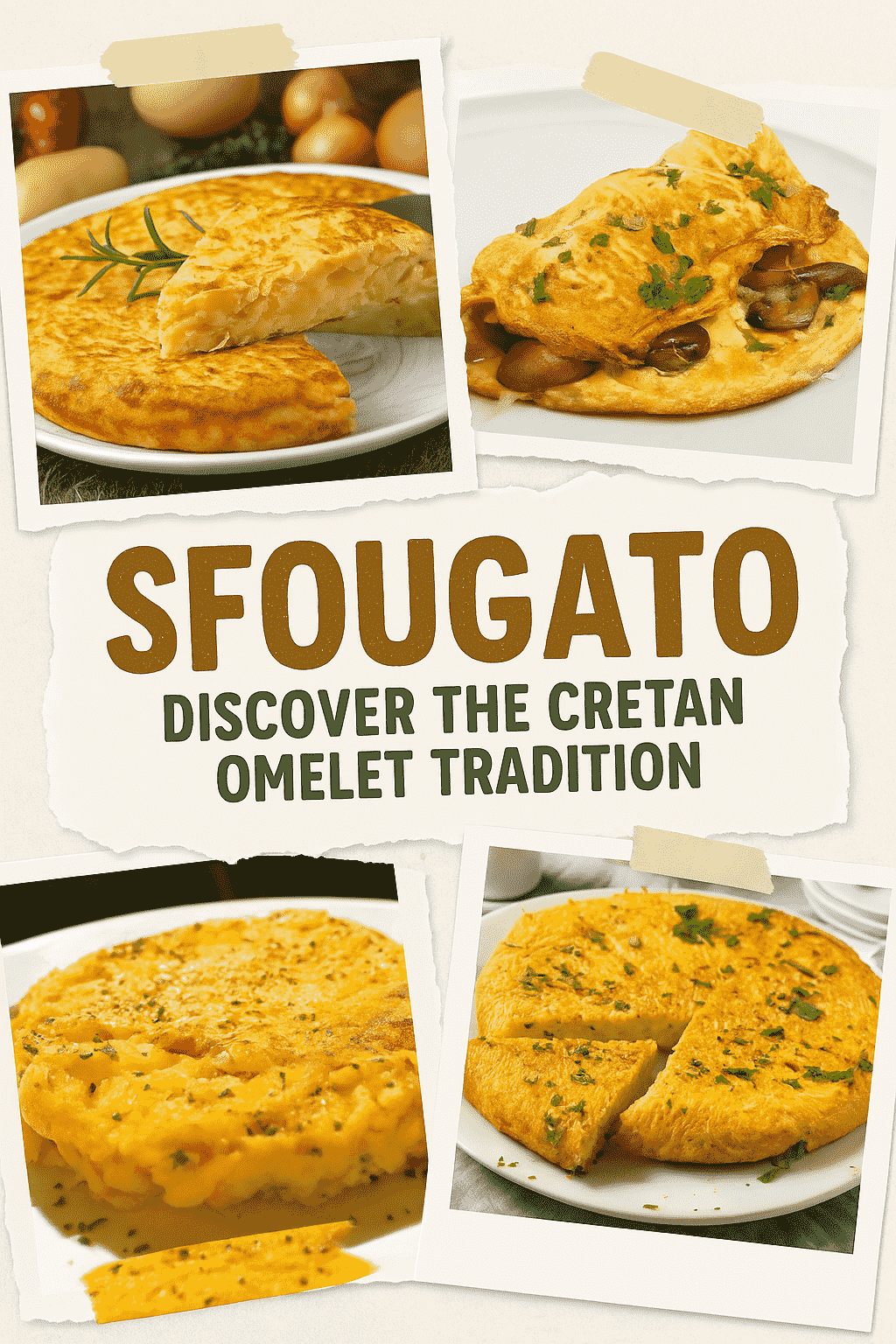Sfougato: Discover the Cretan Omelet Tradition
Sfougato is not just food. It’s a taste of Crete’s countryside, a whisper of tradition, and a symbol of how simple ingredients can become unforgettable. It’s often called a Cretan omelet, but that hardly does it justice. This is not the kind of omelet you flip in a hurry. Sfougato is slow food, rooted in seasonal produce and village life.
It’s soft, fluffy, and rich in flavor. Made with eggs, potatoes, cheese, zucchini, herbs, and sometimes meat, it reflects the rhythms of island life — light when the weather is hot, heartier when it cools. Every bite tastes like the land it comes from.
Where Does It Come From?
Crete is the largest of the Greek islands, known for its rugged landscapes and ancient traditions. The cuisine here is based on simplicity, freshness, and local pride. Sfougato belongs to that tradition. It’s not from fancy restaurants but from home kitchens and mountain tavernas.
In the villages of Crete, you’ll often hear the word “sfougaristo” which means “spongy” or “soft.” That’s where the name comes from. Sfougato is sponge-like — fluffy but filling. It’s been passed down through generations, usually made when the chickens are laying well and the garden is overflowing with zucchini.
Not Just a Breakfast
You might think omelets are for breakfast, but in Crete, sfougato is a meal for any time. It’s served warm or cold, as a main dish or a snack. It can even be part of a mezze spread, cut into thick wedges. It’s great for picnics, road trips, or seaside lunches. And yes, it goes perfectly with a glass of village wine.
Ingredients That Matter
Sfougato is all about what’s in season. The core ingredients are simple — eggs, vegetables, cheese, and herbs. But every cook adds their touch.
Zucchini is the most common vegetable in sfougato. It’s grated and lightly sautéed before being mixed into the eggs. Sometimes it’s paired with wild greens or spinach, especially in spring.
Feta cheese is the usual choice, though in Crete you might also find graviera or mizithra. Each adds a different twist — salty, creamy, or sharp.
The herbs are where the magic happens. Fresh mint, parsley, dill, or oregano are common. They lift the whole dish and give it that unmistakable Mediterranean aroma.
And sometimes, ground meat is added — lamb or beef — especially in heartier versions from the mountains.
How It’s Made
Sfougato is simple but requires a bit of care. First, you prepare the vegetables — grate, drain, and lightly cook them. Then mix them with beaten eggs, cheese, and herbs.
The mixture is poured into a well-oiled baking dish or frying pan. It’s then baked or cooked slowly on the stovetop until golden and puffed. The result is thick, soft, and sliceable.
There’s no one “correct” method. Some people bake it in the oven like a crustless pie. Others prefer the stovetop, flipped like a Spanish tortilla. Both ways work — it’s just a matter of style.
Variations Across Crete
Sfougato isn’t made the same way everywhere. In eastern Crete, it might be heavy on mint and feta. In the west, you might find it with graviera and bits of sausage.
On the southern coast, near Matala or Lentas, you may find sfougato with fresh herbs from the cliffs, giving it a more earthy taste.
In mountain villages, it might be meatier — perfect after a long day of shepherding or olive picking.
And in coastal homes, sfougato is often lighter — just eggs, zucchini, and a handful of herbs.
Why Travelers Love It
If you’re visiting Crete, sfougato is one of the dishes you absolutely have to try. It’s not touristy — most places that serve it are small, family-run tavernas. It’s often not even on the menu. Just ask, and someone’s grandmother will likely prepare it in the kitchen.
It’s also an excellent vegetarian option — and one that feels like comfort food. It fills you up without being heavy. It tastes homemade because it is.
It’s also very affordable. In a village taverna, a portion of sfougato with bread and a side salad might cost just €6–€8. Add a glass of house wine for €2, and you’ve got a meal to remember.
How to Eat Like a Local
In Crete, food is more than just food — it’s connection. Meals are shared, slow, and social. Sfougato is usually served warm, with fresh bread, olives, and maybe a simple tomato salad. You tear the bread, scoop a piece of sfougato, and enjoy it with a sip of wine.
Locals don’t rush. Meals stretch on for hours, especially in the shade of a fig tree or at a seaside table.
Don’t be surprised if you’re offered raki after your meal. It’s the island’s strong grape spirit, often homemade. If you’re lucky, it’ll be served with a tiny piece of honey-soaked pastry.
Making It at Home
You don’t have to be in Crete to enjoy sfougato. If you’ve got eggs, zucchini, and cheese, you’re already halfway there.
Grate two medium zucchinis and squeeze out the water. Sauté them briefly in olive oil with salt and pepper.
Beat six eggs in a bowl. Add 150 grams of crumbled feta or another cheese you like. Stir in chopped herbs — mint, parsley, or dill.
Mix everything together, pour into an oiled pan, and bake at 180°C (350°F) for about 25–30 minutes until golden.
Let it cool a bit before slicing. It’s perfect with yogurt on the side and a slice of rustic bread.
The Cretan Way of Eating
Sfougato is a window into the larger world of Cretan cuisine. This island has one of the healthiest diets in the world — fresh vegetables, olive oil, legumes, wild greens, and not much meat. People here live long, active lives. Food is a big part of that.
It’s seasonal, local, and made with love. Sfougato is a humble dish, but that’s its power. It doesn’t pretend to be more than it is — and that makes it special.
Where to Try It
If you’re visiting Crete, look for sfougato in these spots:
Archanes Village
This wine-producing village south of Heraklion is a great place for home-style Cretan cooking. Tavernas here often make sfougato with fresh herbs from nearby gardens.
Zaros
Near the Rouvas forest, Zaros is famous for its natural spring water — and hearty village dishes. Try sfougato with local graviera cheese and a dash of cinnamon.
Anogeia
This mountain village has a proud food culture. You’ll find sfougato made with lamb or sausage here, especially in winter months.
Mochlos
A quiet fishing village in eastern Crete, Mochlos offers lighter coastal versions. Sfougato here is fresh, herby, and perfect with a sea view.
Tzermiado
On the Lassithi Plateau, this area is known for fresh eggs and garden produce. Sfougato here often includes wild greens and a bit of mizithra.
Final Thoughts
Sfougato is more than a meal. It’s a slice of Crete’s soul — simple, satisfying, and deeply rooted in the land. It shows how humble ingredients, when treated with care, can create something memorable.
Whether you try it in a sunlit village square or in your own kitchen, sfougato connects you to a way of life that values flavor, tradition, and community.
Next time you’re in Crete, ask for sfougato. If it’s not on the menu, ask anyway. It might just be the best thing you eat on the island.











